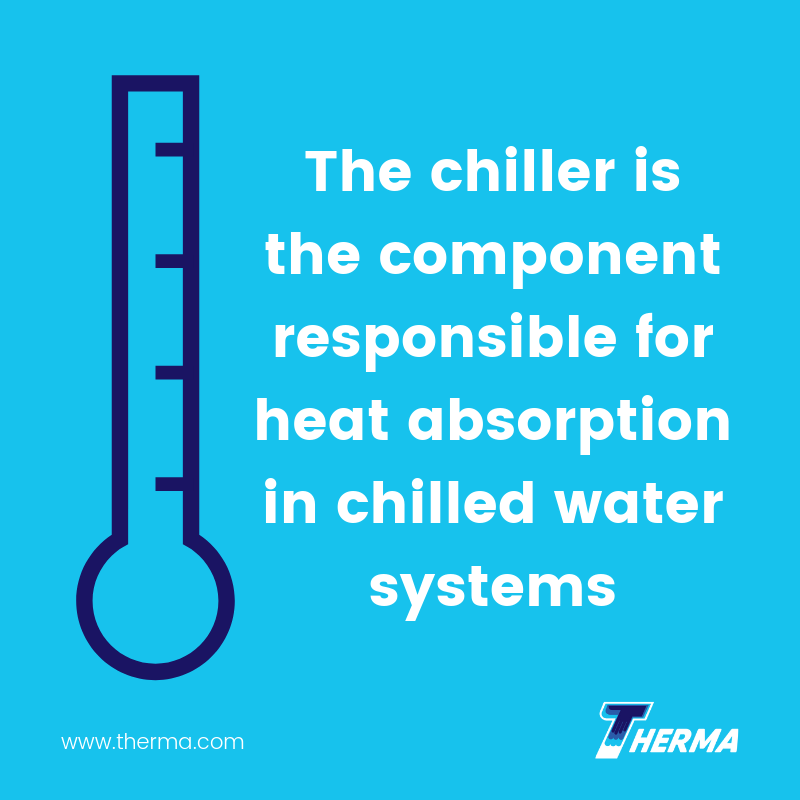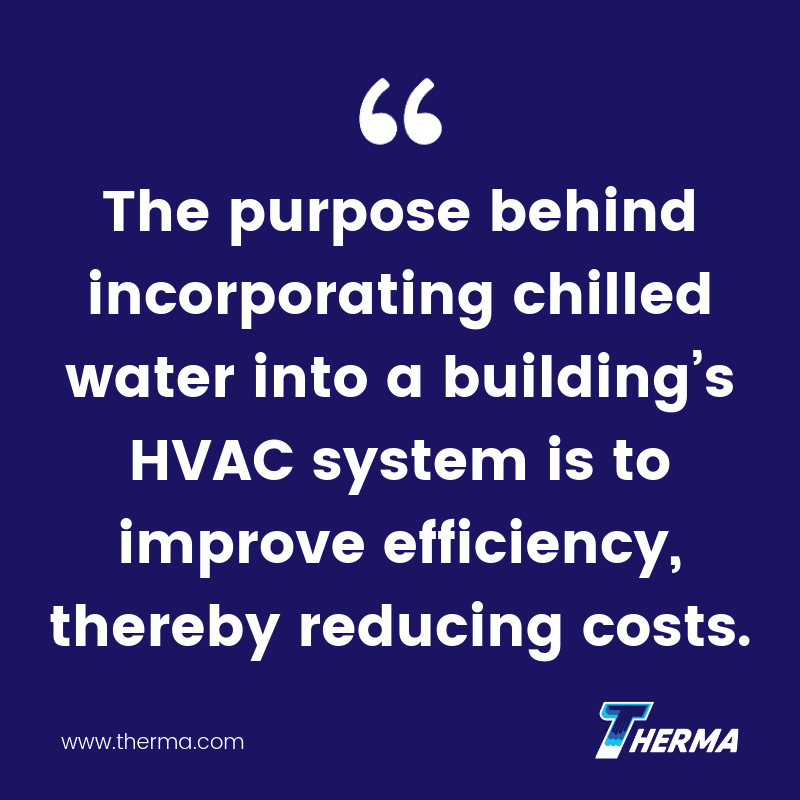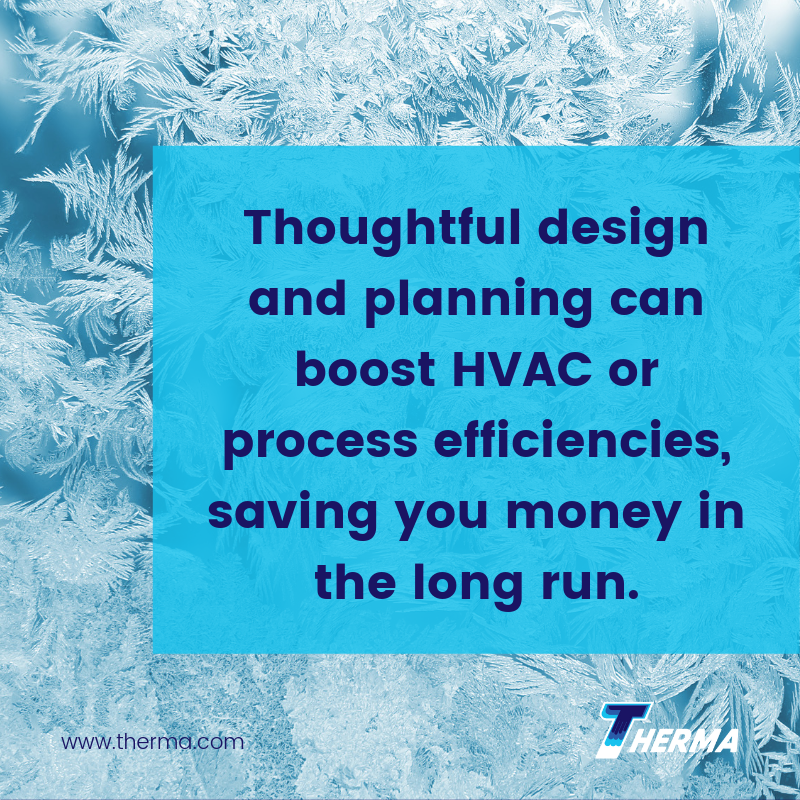By Patti Dees
Chilled water systems improve process efficiency by removing heat from-high-load areas in processing and HVAC systems. Specific building requirements will determine the design of a chilled water system, and proper sizing is necessary to achieve efficiency. Proper sizing depends on factors such as incoming and desired water temperatures, flow rates and load requirements.
The Down and Dirty of Chilled Water Systems

Chilled water systems are refrigeration units. They include many pieces of equipment and the piping required to connect them, including pumps, heat exchangers, compressors and tanks. The chiller is the component responsible for heat absorption in chilled water systems, which transfers heat using water, air or evaporation. Water-cooled heat exchangers contain cooling water, also referred to as condenser water. Cooling water is a mix of water and glycol or water and other compatible coolants. The cooling water recirculates in a closed loop system between the chiller and the equipment used to reject the exchanged heat, such as a cooling tower or radiator.
A separate closed-loop system brings warmer water from the high-load area to the chiller. The heat from the warmer water transfers to the cooling water for heat rejection, thus chilling the warm water. This chilled water recirculates back to the building load area.
In HVAC systems, the chilled water supplies the air handling and fan coil units. Warm air from the building passes over the coils; heat transfers to the chilled water, cooling the building air. The chilled water, now warmer, returns to the chiller, and the cycle repeats.
The Right Chilled Water System for You

The purpose behind incorporating chilled water into a building’s HVAC system is to improve efficiency, thereby reducing costs. Inefficiencies from poor design or equipment choices can have the opposite effect. For instance, a design error in the chilled water pump can affect your bottom line. Low flow and pressure will place limits on the degree of heat transfer that’s possible, reducing an HVAC system’s ability to cool occupied spaces. The other extreme, of high flow rates and pressures, leads to excess pumping and wasted energy. Working with knowledgeable technical staff is the first step in correctly sizing a chilled water system.
To prepare for the design phase of new construction or retrofits, start by answering a few questions and gathering related information on factors such as building load requirements, the temperature of the water entering the chiller, the temperature of chilled water that’s required and the desired flow rates:
—Are you using water or a water mix for the condenser water? The chemical composition of your cooling water affects flow rates and heat transfer.
—What water temperatures are needed at the HVAC equipment and at the chiller? Consider both supply and return temperatures for both the cooling water and chilled water closed-loop systems, as these temperatures are required to calculate the temperature difference, or delta T.
—What kind of pipes will be used? What are their sizes, and what materials are they made from? This can impact flow rates and pressures.
—How much heat are you trying to remove? What are the building load requirements?
Considering other design elements can help you to improve optimization and operating costs. Sensors, automated data collection and controls will all aid in optimization. Useful measurements allow staff to recognize potential issues or areas that could be improved. Clear control schemes with appropriate valving and piping reduce the chances for suboptimal operation.
Considering The Costs
The choice of equipment type and configuration, as well as changes in temperature range or flow rates, have a tremendous impact on the operational costs of chilled water systems. Sometimes higher initial costs lead to lower chiller operating costs. Modeling and simulation scenarios can help identify the best combination for your needs.

In summary: Remove heat from high building loads with a chilled water system. Thoughtful design and planning can boost HVAC or process efficiencies, saving you money in the long run.
Biography:
Patti Dees is a chemical engineer turned writer. She spins her polymath nature to produce clear and informative pieces on technical topics.
References
- https://www.csemag.com/articles/designing-chilled-water-systems/
- https://www.engproguides.com/chilled-water-pump-design.html
- https://www.engineeringtoolbox.com/cooling-loads-d_665.html
- https://www.csemag.com/articles/calculating-chiller-selection/
- https://www.csemag.com/articles/selecting-chillers-chilled-water-systems/







